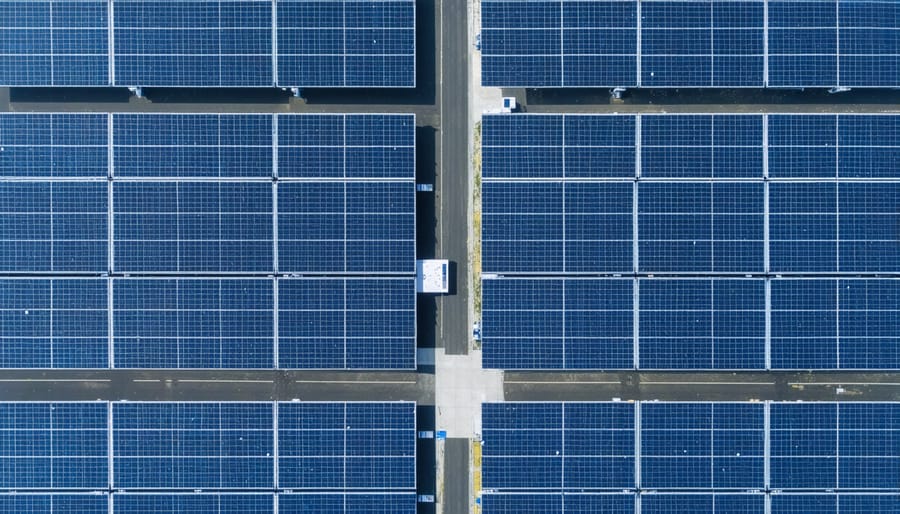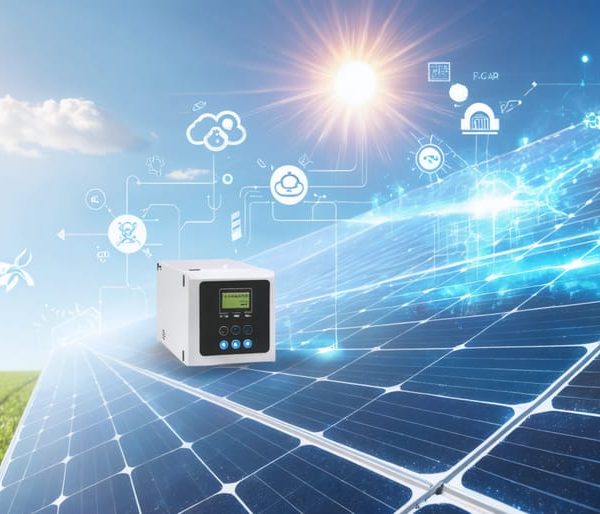Protect Your Solar Investment: Smart Weather Defense Strategies That Work
Weather risk management for solar installations demands a strategic balance of prevention, monitoring, and rapid response capabilities. Modern solar arrays face increasingly unpredictable climate patterns, making it crucial to protect against severe weather through comprehensive safeguards.
Smart monitoring systems now enable real-time weather tracking and automated panel adjustments, reducing damage risks by up to 60% during extreme conditions. These intelligent solutions, combined with structural reinforcements and proper installation techniques, create a robust defense against nature’s uncertainties.
Property owners implementing weather risk management strategies consistently report 30% lower maintenance costs and significantly extended system lifespans. By integrating weather-resistant materials, strategic panel positioning, and automated emergency protocols, solar installations maintain optimal performance even in challenging climate zones.
The key to effective weather risk management lies in proactive planning rather than reactive responses. Regular system assessments, coupled with weather pattern analysis and preventive maintenance, ensure your solar investment remains secure and productive throughout its operational lifetime.
Understanding Weather Threats to Solar Systems
High Wind Impact Assessment
Strong winds can pose significant challenges for property owners, particularly those with solar installations or outdoor equipment. Wind forces can create uplift pressure on structures, potentially compromising their integrity and safety. For solar panels, high winds may cause micro-cracks or complete panel displacement if proper mounting systems aren’t in place.
To assess wind impact risks, start by evaluating your property’s location and typical wind patterns. Coastal areas and regions with frequent storms require more robust protection measures. Consider factors like building height, surrounding terrain, and local wind speed records when planning structural reinforcements.
Key areas to examine include roof attachment points, panel mounting systems, and equipment securing mechanisms. Professional wind load calculations can determine if your current setup meets local building codes and safety standards. Regular inspections should focus on checking for loose components, worn fasteners, and signs of wind-related stress.
Property owners can minimize wind risks by installing wind deflectors, reinforcing mounting systems, and maintaining proper panel tilt angles. Modern monitoring systems can also alert you to potential issues before they become critical problems, allowing for proactive maintenance and protection.
Hail and Storm Protection
Protecting your property from hail and storm damage requires a proactive approach and smart preparation. Install impact-resistant panels and protective covers designed to withstand severe weather conditions. These materials are tested to resist hailstones up to two inches in diameter and can significantly reduce storm-related damage.
Consider implementing a multi-layer protection system that includes hail guards, mesh screens, and reinforced mounting structures. Modern hail detection systems can automatically tilt panels to their most protective angle when severe weather approaches, minimizing potential impact damage.
For comprehensive storm protection, ensure your installation includes proper grounding systems and surge protectors. Regular maintenance checks help identify vulnerable areas before storms hit. Keep trees trimmed and remove loose objects that could become projectiles during high winds.
Create an emergency response plan that includes quick-deploy protective covers and clear procedures for before, during, and after storms. Consider installing weather monitoring systems that provide real-time alerts, allowing you to take preventive action before severe weather arrives.
Remember to document your system’s condition regularly with photos and maintain detailed maintenance records for insurance purposes.
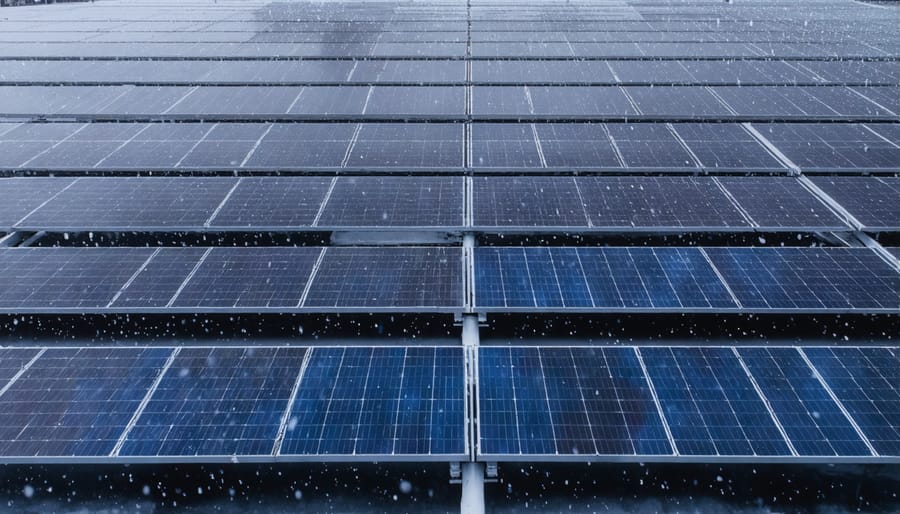
Preventive Measures and Installation Best Practices
Mounting System Selection
Selecting the right mounting system is crucial for protecting your solar installation against adverse weather conditions. The mounting system serves as the foundation of your solar setup, and its durability directly impacts your system’s longevity and performance.
For residential installations, roof-mounted systems should use corrosion-resistant materials like aluminum or stainless steel. These materials withstand various weather conditions while maintaining structural integrity. When choosing mounting rails, opt for those with integrated water management channels to prevent moisture buildup and potential roof damage.
Ground-mounted systems require deeper consideration of soil conditions and wind patterns. Consider using reinforced concrete foundations for areas with high wind speeds or unstable soil. Adjustable mounting systems allow for optimal panel positioning and can be modified to better handle seasonal weather changes.
The mounting system you choose should align with your regular maintenance procedures and accessibility requirements. Look for systems that provide adequate spacing between panels and the mounting surface to allow for proper airflow and cleaning access.
For coastal areas, choose mounting hardware with enhanced corrosion protection, such as hot-dip galvanized steel or marine-grade aluminum. In regions with heavy snowfall, ensure your mounting system includes sufficient tilt angles and reinforced support structures to handle the additional weight.
Remember to verify that your chosen mounting system meets local building codes and wind load requirements. Working with certified installers who understand regional weather patterns can help ensure your mounting system provides reliable protection for your solar investment.
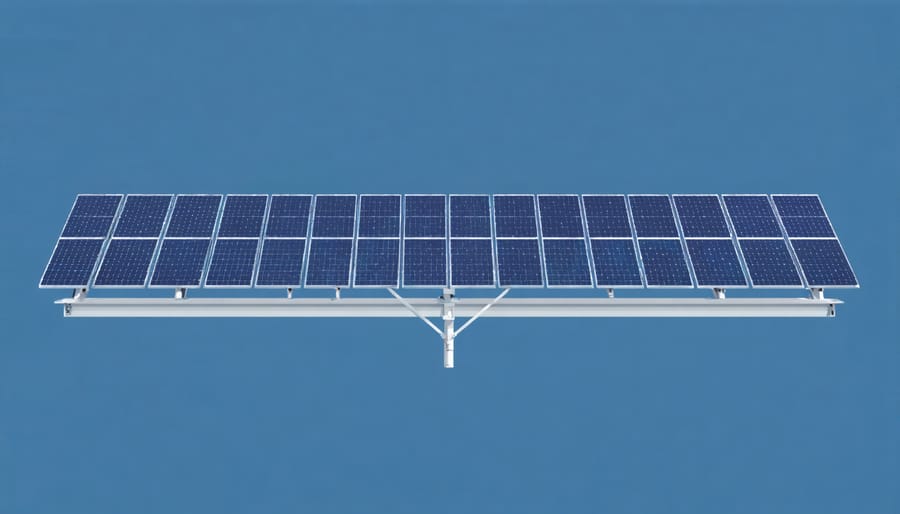
Panel Placement Strategy
Strategic panel placement is crucial for maximizing solar energy production while minimizing weather-related risks. The optimal positioning starts with a thorough site assessment, considering factors like local weather patterns, surrounding structures, and typical wind directions.
For regions with heavy snowfall, installing panels at a steeper angle (typically 35-45 degrees) helps snow slide off naturally, preventing accumulation and reducing the risk of weight damage. In areas prone to high winds, lower tilt angles (around 15-20 degrees) create less wind resistance, making panels more stable during storms.
Height positioning also plays a vital role in weather protection. Elevating panels at least 18 inches above the roof surface allows for proper air circulation, reducing heat buildup and providing space for maintenance. This gap also helps prevent water accumulation and leaves from getting trapped underneath.
Consider creating wind breaks by installing panels in a staggered formation, which helps distribute wind load more evenly across the array. For commercial installations, implementing row spacing of 1.5 to 2 times the panel height reduces shading and allows for better airflow between panels.
The compass orientation of your panels affects both energy production and weather resilience. While south-facing installations (in the Northern Hemisphere) maximize sunlight exposure, east-west configurations can provide better stability against prevailing winds and more consistent power generation throughout the day.
Remember to account for local building codes and weight distribution requirements when planning panel placement. Working with certified installers ensures your system meets safety standards while optimizing protection against weather-related challenges.
Weather Monitoring Systems
Smart Weather Sensors
Modern weather sensors are transforming how we protect solar installations from environmental risks. These smart devices continuously monitor key weather parameters like wind speed, temperature, humidity, and precipitation in real-time, providing property owners with crucial data to safeguard their investment.
Today’s weather monitoring systems typically include a network of interconnected sensors that communicate wirelessly with a central hub. Each sensor serves a specific purpose – anemometers measure wind velocity, pyranometers track solar radiation levels, and rain gauges monitor precipitation. When combined, these readings create a comprehensive picture of local weather conditions.
Installation is straightforward: mount the sensors in strategic locations around your solar array, connect them to your monitoring system, and configure alert thresholds. Many modern systems integrate with smartphone apps, sending instant notifications when weather conditions approach dangerous levels.
The data collected helps predict potential risks and triggers automated responses, such as adjusting solar panel angles during high winds or activating protective covers before hail storms. This proactive approach significantly reduces weather-related damage and maintenance costs while extending the lifespan of your solar installation.
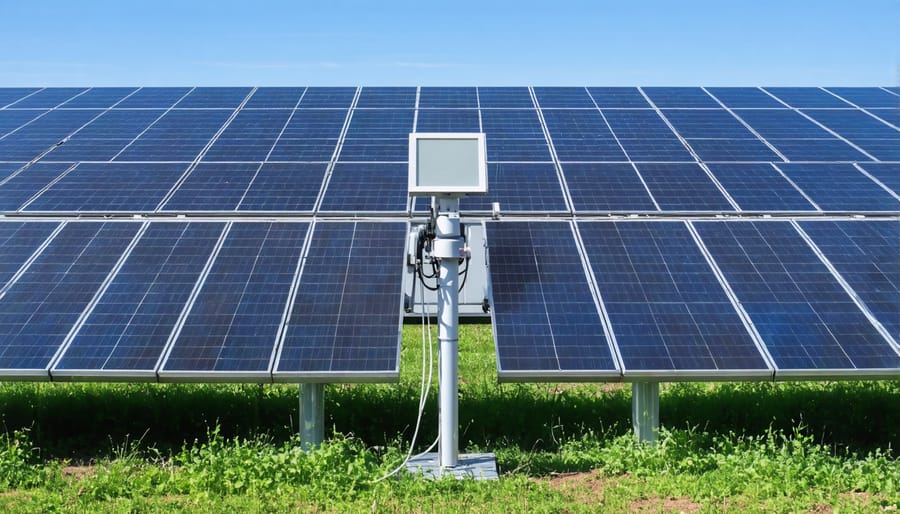
Alert Systems Integration
Modern weather risk management relies heavily on integrated alert systems that keep you one step ahead of potential threats to your solar installation. Setting up automated alerts begins with connecting your weather monitoring equipment to a central management platform. This system can track multiple parameters including wind speed, precipitation, and severe weather warnings from national weather services.
To maximize protection, configure alert thresholds based on your specific equipment specifications. For instance, set wind speed alerts at levels below your panels’ maximum tolerance, giving you time to activate protective measures. Many systems now offer smartphone integration, sending push notifications when conditions approach concerning levels.
Your weather emergency preparedness should include clear response protocols for different alert levels. Create a tiered response system: yellow alerts for cautionary measures, orange for preventive actions, and red for immediate emergency procedures. Ensure all stakeholders understand their roles and responsibilities when alerts are triggered.
Consider integrating your alert system with automated protection mechanisms, such as motorized panel tilting or automatic storm shutters. This combination of early warning and automated response provides the most comprehensive protection for your solar investment.
Emergency Response Planning
Quick-Response Checklists
Here are essential quick-response checklists for common weather events that could affect your solar installation. Following these emergency response protocols can help minimize damage and ensure safety:
For High Winds:
✓ Secure loose equipment and materials
✓ Check mounting system integrity
✓ Document pre-storm panel positions
✓ Switch system to safe mode if possible
✓ Monitor weather updates continuously
For Hailstorms:
✓ Activate automatic tilt system (if available)
✓ Enable protective covers if installed
✓ Record video/photos for insurance
✓ Monitor hail size and intensity
✓ Stay clear of panels during storm
For Lightning:
✓ Ensure surge protectors are active
✓ Disconnect system if safely possible
✓ Stay away from metal components
✓ Monitor inverter status
✓ Check grounding systems
For Heavy Snow:
✓ Clear access paths to equipment
✓ Remove snow accumulation safely
✓ Check panel tilt angles
✓ Monitor weight loads
✓ Inspect support structures
For Extreme Heat:
✓ Check ventilation systems
✓ Monitor inverter temperature
✓ Clear debris from cooling fins
✓ Record performance metrics
✓ Ensure shade structures are secure
Keep these checklists easily accessible and review them regularly with your maintenance team. Remember to prioritize personal safety above equipment protection.
Recovery Procedures
After a severe weather event, conducting a thorough inspection of your solar installation is crucial for maintaining its performance and longevity. Start by visually examining your panels from a safe distance, looking for any obvious damage like cracks, loose mounting hardware, or debris accumulation. If it’s safe to do so, take photos to document any visible issues for insurance purposes.
Once conditions are suitable, schedule a professional inspection to assess the system’s electrical components, mounting structures, and panel integrity. Your inspector should check for water damage to inverters, loose connections, and compromised seals around roof penetrations.
Create a detailed maintenance checklist that includes:
– Cleaning debris and dirt from panels
– Testing electrical connections
– Verifying proper panel alignment
– Checking roof integrity around mounting points
– Confirming inverter functionality
– Testing monitoring system accuracy
Document all findings and repairs in your maintenance log. This record-keeping helps track system performance over time and can be valuable for warranty claims or insurance purposes.
Consider implementing preventive measures based on inspection findings. This might include upgrading mounting hardware, adding protective barriers, or adjusting panel angles to better withstand future weather events.
Remember to review and update your emergency response plan based on lessons learned from the weather event. This helps ensure better preparation for future incidents and maintains optimal system performance.
Weather risk management is no longer optional in today’s climate-conscious world – it’s an essential investment in your property’s future. By implementing comprehensive monitoring systems, maintaining regular inspection schedules, and having clear emergency response plans, you can significantly reduce weather-related risks to your solar installation and property.
Remember that proactive management saves both time and money in the long run. The small steps you take today, from installing weather sensors to updating your insurance coverage, create a robust shield against unpredictable weather events. Many property owners who have embraced these strategies report fewer incidents and lower maintenance costs over time.
Stay informed, stay prepared, and keep updating your risk management strategies as technology evolves. Your commitment to weather risk management not only protects your investment but also contributes to the broader goal of sustainable energy adoption.

